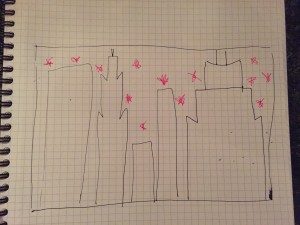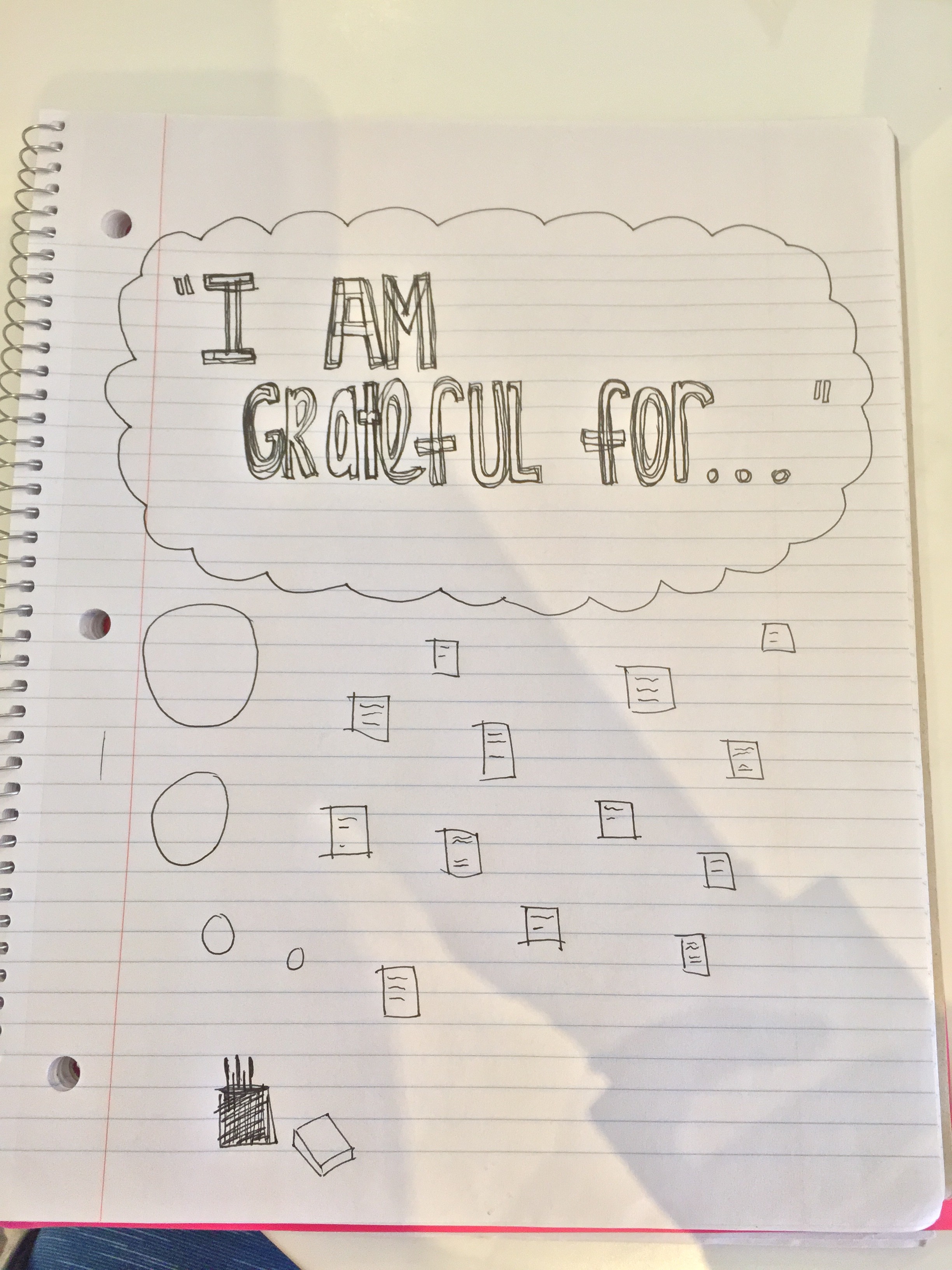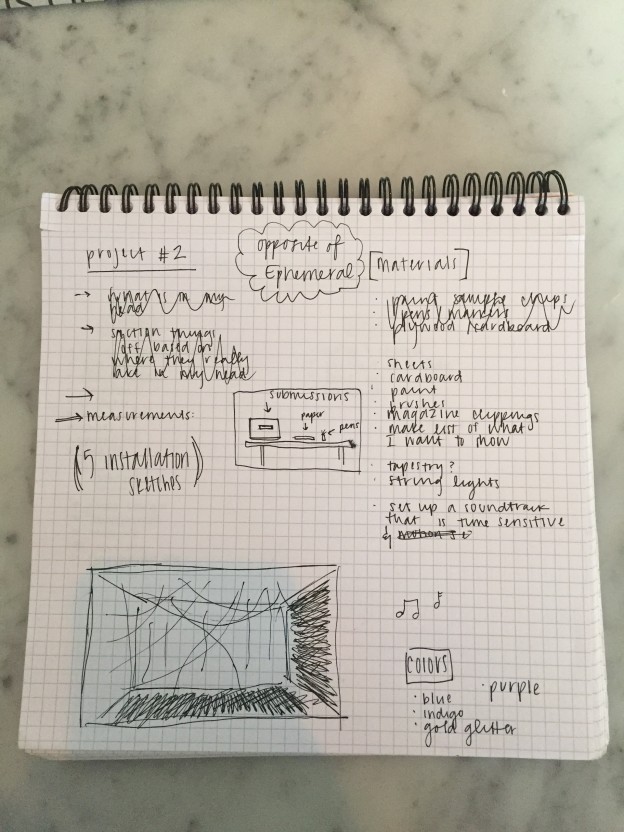
For my conference project, I’ve chosen to create a shadow wall interactive. The shadow wall will be interactive in the sense that the users’ shadow can control the way that they leaves fall. At first, the leaves will fall from the top of the screen and can be moved around, caught, and dropped based on the movement of the shadow of the user. As time goes on, buildings will start to show up on the screen. The buildings also control the fall of leaves. The buildings stop the fall of leaves. Continually, more buildings arise and as they do, the leaves are unable to fall and the user is unable to interact with them.
I’m interested in making this interaction for many reasons. When we visited the sony museum in the city, I really enjoyed the last interactive, the shadow wall. I also like the idea of a interactive having a sort of lasting affect…something it leaves the user thinking about. At first I found this to be one of the challenges of our conference work…It had to be on our laptops, which I felt was going to be limiting to the ability to leave a lasting thought with the users. If it works how I want it to, it will entice users to play with the leaves, something enjoyable to everyone. The longer they play, the more buildings will pop up. Eventually, there will be no more leaves to play with. The user will see the point I am making; the industrialization and continues building can have the ability to take away some of natures treasures.

normans seven steps:
- forming the goal: the user is interested in the falling leaves and wants to interact.
- forming the intention: the user will interact and the longer they interact the more they experience
- specify the action: the user will approach the interactive either because they see others using it, or they are simply interested in it. As soon as they are within the range of the motion sense, they will see how they can interact with it.
- execute the action: the user will play with the interactive; the leaves will fall and eventually there will cease to be any room for the laves to fall.
- perceiving the state of the world: the user realizes that the leaves have stopped being able to fall, and that they no longer can interact with the leaves
- interpret the state of the world: the user interprets the notion behind the leaves stopping
- evaluate the outcome: the user has interacted with the art and walked away thinking about the meaning behind it
design:
when I was first thinking about what to do for my conference project, I wanted to do something that had sort of a sociological impact. I was thinking hard on what I could do because I was restricted to the laptop for my interface. I then remembered that my favorite exhibit at the sony museum was the interactive shadow wall. So I decided to do something with that. And, since it’s fall right now, I thought what better thing to have falling down the screen, than leaves!! I wanted to add an element of thought to it, so I came up with the idea of having the buildings arise on the shadow wall, taking up space that used to be open for play.

code:
- draw(); leaves will consistently and continuously fall from the top of the screen to the bottom.
- setup(); the background will be a shadow screen and I will have motion sense as well.
- variables: I will create variables for the buildings that will be timed.
- color: the color of the leaves will be consistent and the leaves will be an image repeatedly falling. the buildings will be grey with black outlines
- interactivity: the user will be able to manipulate the path that the leaves take when falling from top to bottom of screen.
10.26.15 – update with deWaal ideals in urban media:
My conference project falls under ‘The City as an Operating System’ because my installation can “sense individual actions in real time, and can aggregate these into data that can be used actuate all sorts of actions.” (deWall 11) Specifically, the code can detect the movement (individual actions) and then that data causes changes in leaves, as well as changes in scenery on the shadow screen.
update with magic circle


